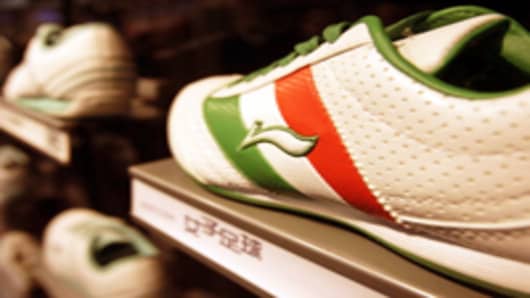In the latest rankings of the richest people in China, Li Ning — founder of one of the country’s most famous retail brands — has tumbled from 64 last year to 291.
The decline in fortune mirrors that of the Olympic gymnast’s self-named brand, which last year had overtaken Adidas for second place in the Chinese sportswear market. At that time, the chief executive was predicting it would be a top-five global sportswear brand by the end of the decade.
But Li Ning has since seen its profits and share price plunge and is rethinking its ambitious branding strategy.
Is this a temporary setback, or is there a bamboo ceiling that stops Chinese brands from becoming truly competitive even in their own market? The question is whether Chinese companies are strong enough in branding, marketing, innovation, design and quality to become something more than just copycats.
With so few successful Chinese brands in the global marketplace, the trials and tribulations of Li Ning can be seen as a proxy for the fortunes of brand China.
The founder, who lit the flame at the opening ceremony of the 2008 Beijing Olympics, is not only one of China’s top athletes but also among its most renowned entrepreneurs. His appearance at the Bird’s Nest stadium — which instantly linked the powerful nationalism of the event with his brand — must rank as one of the marketing coups of the decade.
But those days seem long gone: Li Ning’s net profits fell 50 percent in the first half year on year, and its share price has fallen 57 percent since the beginning of the year.
Last year Li Ning unveiled a new logo (which, like its original one, bears a resemblance to the Nike swoosh), and a plan to reposition the brand as a near-direct competitor with global brands such as Nike and Adidas.
But with many consumers unwilling to follow a local brand upmarket, Li Ning appears to be returning to its cheap-and-cheerful roots. It still holds a slight advantage over Adidas in the China market led by Nike, but market analysts expect it to slip back to third place soon. Chinese customers in general do not want to spend extra for a domestic brand if they can afford a foreign one.
“Li Ning has done really well to challenge Adidas, but it has done it by copying the model,” says Andy Edwards, head of planning at BBH, the advertising agency, in Shanghai. “Now Li Ning needs to build greater value, stop copying and find its own unique voice?...?and drive this through everything the brand does, especially the product.”
Shaun Rein, author of a forthcoming book, The End of Cheap China, says Chinese companies are trying to build brands “but for every two steps forward there is one step back”.
Three years ago, when Li Ning was a rapidly growing force, its “brand positioning wasn’t strategic enough”, he says. “They went from saying we are the best Chinese brand, to saying we are going to take on Nike globally, to going back to cheap again, over a three-year period. They didn’t keep consistency in their image.”
Zhang Zhiyong, chief executive, admitted in a recent interview with the Beijing News that Li Ning had lost loyal customers when it raised prices. “I think we have to learn how to balance the price-driven and the quality-driven,” he said.
At a Li Ning outlet in the Shanghai suburb of Hongkou, salesman Dai Quangang says his store no longer carries the high-end products. “This is a residential area and laobaixing [ordinary folks] prefer lower-priced products,” he says. The shop now stocks athletic shoes priced from Rmb339 to Rmb569 ($53-$90), compared with the Rmb580-Rmb1,180 shoes at the Adidas shop across the street.
Meanwhile, Adidas is expanding aggressively into Li Ning territory in smaller Chinese cities, and aims to boost its presence from 550 to 1,000 cities by 2015. Colin Currie, Adidas head for greater China, says that, even in poorer cities, consumers are eager to trade up to foreign brands as their income rises.
HSBC forecasts that local brands will lose market share in the coming year as wage rises pick up pace.
“Chinese consumers tend to have low brand loyalty, especially in the lower-tier cities,” HSBC said in a recent report. “As Nike and Adidas are introducing lower-priced products, it comes into question whether the fans of domestic brands will continue to maintain their loyalty.”
For its part, Li Ning is predicting two or three years of “short-term pain” as it moves to “better adapt to, and even lead, the long-term development of the sporting goods industry in China”.
Those who track the progress of brand China will be watching to see if the company can break the bamboo ceiling once and for all.
Additional reporting by Shirley Chen


